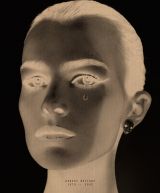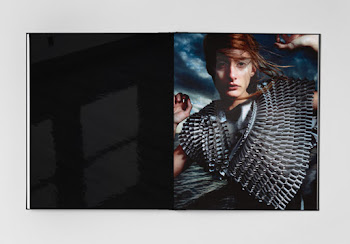Robert Nettarp: 1970 – 2002

|
vyprodáno |
|
Internetová cena:
|
1 992,00 Kč 
|
|
Běžná cena:
|
2 490,00 Kč |
|
Zboží není skladem
|
| Jazyk: |
anglicky |
| Vazba: |
pevná |
| Počet stran: |
208 |
| Formát: |
24 x 29 cm |
| ISBN/EAN: |
9789198022568 |
| Nakladatel: |
Livraison Books |
| Rok vydání: |
2018 |
| Edice: |
Móda
/ Design
|
From a fashion perspective, the nineties meant a shift on many levels. Fashion photographers, as well as other practitioners, started to engage with fashion in a critical and self-reflexive way, turning, as Sophie von Olfers suggests in ”Not in Fashion” from 2010, ”the magazine into an active platform for cultural dialogue.” Instead of reproducing stereotypical fashion imagery as expected by the fashion system (or logic of the fashion industry), they became authors in their own right, blurring the lines between fashion, art and other creative disciplines. Like artists, fashion photographers began embracing their own subjectivity and acting out of personal concerns, addressing issues that traditionally had not been part of their professional repertoire.
Even though the increased diversity of individual voices within the field makes generalization difficult, fashion photography in the nineties nevertheless displays some common features. As a reaction to the cult of extravagant glamour and the exclusive object during the previous decade, many photographers were moving towards reality (which, of course, in fashion usually is a staged reality), creating pictures in a documentary style to deconstruct and negotiate the borders between fashion and everyday life. Another significant feature was the adoption of digital technology. By applying software as a tool for visual expression, photographers effectively transformed the dynamics of image making, destabilizing the relation between physical reality (as viewed through the camera) and appearance.
Irrespective of visual strategy, much of the imagery evoked a sense of darkness, which has been explored in depth by caroline evans in ”Fashion at the Edge” from 2003. By freeing themselves from demands to be prescriptive, fashion photographers could suddenly deal with the whole spectrum of human experience, positive as well as negative aspects. More often than not, the imagery was ambiguous. Evans talks of themes within fashion ”at the borders of beauty and horror, where sex and death intersected with commerce.” Avoiding idealizing, fashion photographers and their collaborators used their voices to articulate anxieties against a backdrop of rapid changes in society during this time. But they also constructed new meaning and imagery, using their creativity as a positive force to outline radical visions of new, alternative realities, without leaving the fashion context.
Robert Nettarp’s work reflects the transition towards a more subjective and equivocal fashion photography in the nineties. At his sudden death at age 32, the swedish fashion photographer was celebrated as a truly creative influence in the industry. Using digital means to distort, twist and subvert reality, Nettarp challenged ideas about perfection, as in ”Åse Beautiful Pain”, probably his most renowned picture, where the model’s face is covered by fake bruises. He also raised questions about sexuality, violence and gender with imagery fuelled by a disturbing, dark energy, or a camp, wicked attitude: heads wrapped in transparent plastic or close-fitting balaclavas, a model sticking her tongue out to the camera, naked or semi-naked bodies in surreal settings, often processed in the computer studio.
Above all, Nettarp didn’t want the surface to take over. Things had to be broken down, perverted, to reveal deeper layers, an emotional state. Or in his own words: ”whipped up”, digitally reconfigured. Perhaps this is also his biggest legacy, the art of retouching as a way to visualize on the outside what takes place on the inside. If the mood is dark, that’s because he exposed the imperfections, what’s usually hidden, denied or repressed. By using fashion as a space for personal intervention and digital tools as means of communication, he made the invisible visible – a discomforting scratch on the perfect exterior.
Ukázky z knihy (pro zvětšení klikněte)








Diskuze
Žádný příspěvek do diskuze. Přidejte svůj názor »
|







